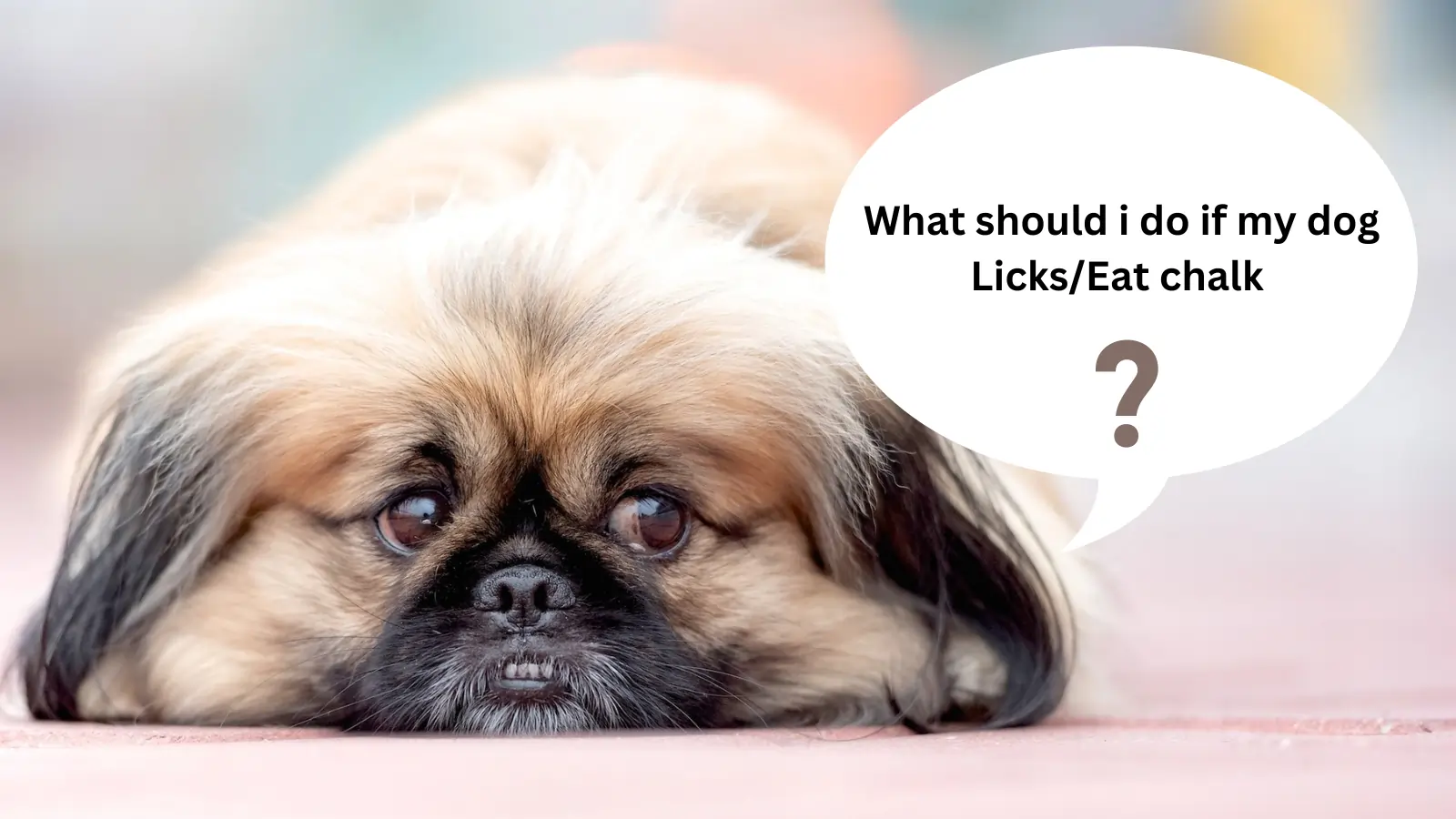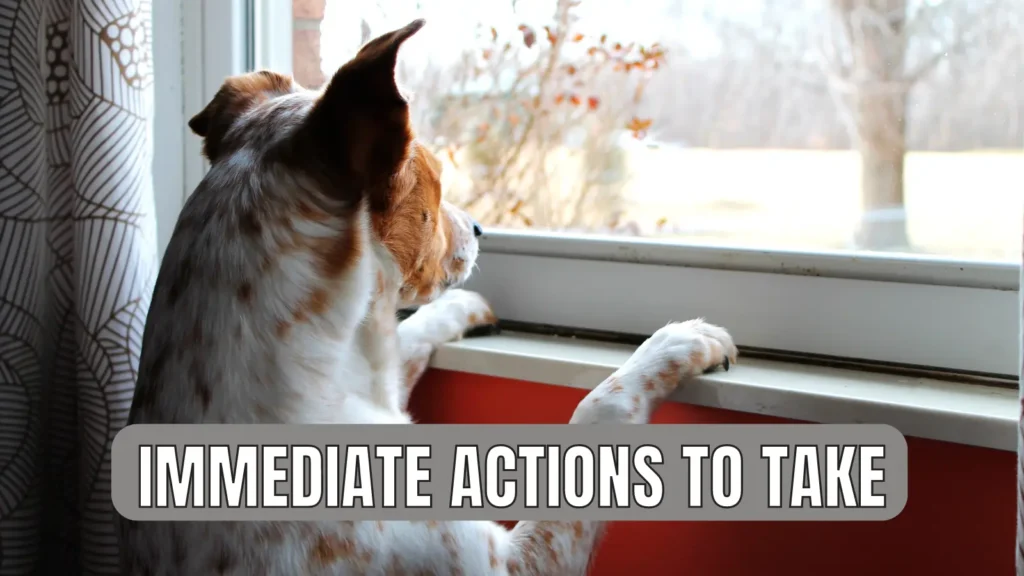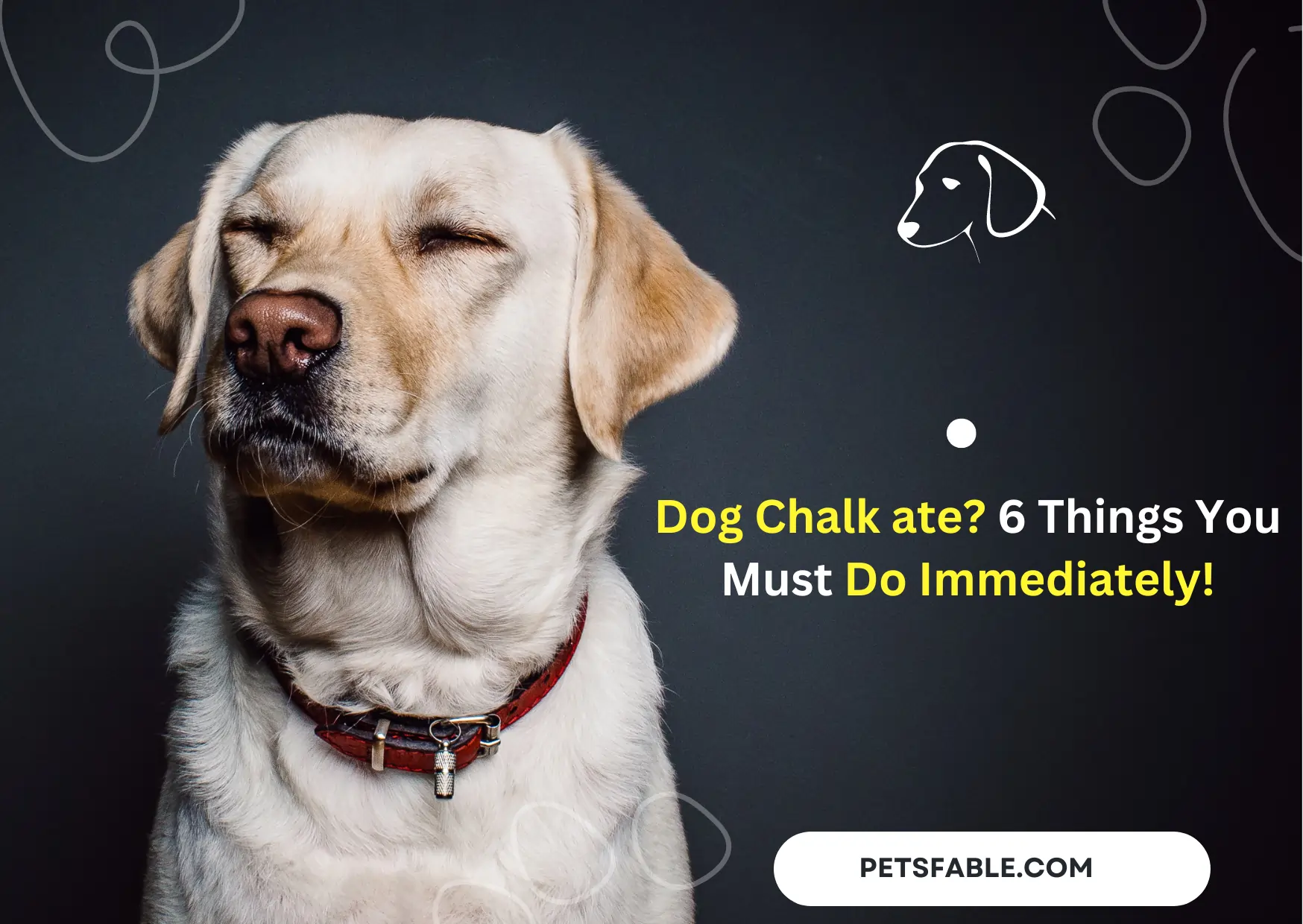While chalk is generally non-toxic to dogs, ingestion, especially in larger amounts, can still pose a risk of stomach upset.
Most types of chalk are made from natural minerals which are not harmful in small quantities, but it's important to monitor your dog for any signs of distress or unusual behavior following ingestion.Immediate Steps to Follow If Your Dog Chalk eat
- Observe Your Dog: Keep a close eye on your dog for any signs of discomfort or unusual behavior. Symptoms to watch for include vomiting, diarrhea, or apparent abdominal pain.
- Remove Chalk Access: Ensure all chalk is out of your dog’s reach to prevent further ingestion.
- Check the Type of Dog Chalk eat: Identify the type of chalk your dog has ingested. While most common chalk is made from harmless materials like gypsum or calcium sulfate, some specialized chalks might contain other potentially harmful components.
- Offer Water: Encourage your dog to drink water. This can help dilute any stomach irritants and ease minor digestive discomfort.
- Consult Your Veterinarian: If you notice any symptoms of distress or if your dog consumed a significant amount of chalk, contact your veterinarian immediately for advice. They can provide guidance based on the type of chalk and the amount ingested.
Conclusion
Ingesting small amounts of standard chalk typically does not pose a serious health risk to dogs, but it’s essential to remain vigilant and take precautionary measures. Always keep potentially harmful items like chalk securely stored away from pets, and consult your veterinarian if any health concerns arise.
Understanding the Risks of Chalk to Dogs
Chalk is generally not considered toxic to dogs, but it can still pose health risks depending on the amount ingested and the dog’s individual health. While the primary ingredient in most chalks, calcium carbonate, is relatively harmless, ingestion in significant amounts can lead to gastrointestinal upset and other issues.
Immediate Steps to Take if Your Dog Licks or eats Chalk
| Step | Action |
|---|---|
| Monitor Your Dog | Keep a close eye on your pet for any signs of discomfort or unusual behavior. Watch for lack of appetite, vomiting, changes in bathroom habits, and lethargy. |
| Evaluate the Quantity Ingested | Assess how much chalk your dog has consumed. Large amounts relative to your dog’s size may cause blockages or gastrointestinal distress. |
| Check the Chalk Type | Verify if the chalk is non-toxic. Be cautious with unknown brands or children’s chalk, which may contain harmful additives. |
| Offer Water | Encourage your dog to drink water to help dilute any stomach irritants and ease digestive discomfort. |
| Consult Your Veterinarian | If your dog shows any distress or you’re concerned about the amount ingested, contact your vet immediately for advice or an examination. |
Additional Considerations
- Choking Hazards: For smaller dogs, the physical size of chalk pieces can pose a choking hazard. Be vigilant for signs of choking, such as difficulty breathing, pawing at the mouth, or distress.
- Respiratory Irritation from Chalk Dust: If your dog inhales chalk dust, it can irritate the respiratory tract. Symptoms might include sneezing, coughing, or nasal discharge. If these symptoms appear, keep your dog in a well-ventilated area and consult your veterinarian.
- Preventive Measures: To avoid future incidents, store chalk out of your dog’s reach and supervise your pet during activities where chalk is used. Clean up any spills promptly to prevent your dog from licking or inhaling chalk dust.
Conclusion

While a small amount of chalk is unlikely to cause serious harm, ingestion of larger amounts can lead to health complications for your dog. By understanding the potential risks and taking immediate action, you can ensure your dog remains healthy and safe. Always err on the side of caution and consult a veterinarian if you have any doubts or concerns about your pet’s health after ingesting chalk.
Will Your Dog Be Fine If It eat Chalk? Understanding the Risks
If your dog gobbled up a piece of chalk, there’s generally no need to panic. Chalk is, in general, safe for dogs and not inherently poisonous. A fit and strong dog can usually digest and eliminate small amounts of chalk in their poo without much trouble.
However, some dogs with sensitivity may experience stomach upset, including symptoms like diarrhea and vomiting. These are natural ways for their body to purge and resolve the issue, usually within a day or two. Chalk is minimally toxic, so small amounts are unlikely to cause serious harm.
However, it’s not a good idea to let this become a pattern. Regular eating of chalk can disrupt your dog’s digestive system and potentially damage internal organs over time. While a single incident might not be a cause for concern, repeated ingestion should be avoided to maintain your dog’s health and well-being.
Why Is My Dog Chalk eat?
Have you ever caught your dog with a piece of chalk in its paws, nibbling away as if it’s a treat? It’s a weird sight, considering chalk’s bland and unappetizing taste. The reason for this peculiar behavior often boils down to curiosity or a condition known as Pica, where dogs develop a craving for non-food items like chalk, plastic, metal, or fabric.
In the world of dogs, especially young puppies, exploring with their mouths is a way to understand their environment. They might be drawn to chalk’s strange smell or texture, or simply because it’s lying around, easily accessible.
Older dogs suddenly showing interest in eating chalk could indicate underlying health issues. It might be a sign of nutritional deficiency, where their diet lacks important vitamins and minerals, leading them to crave non-food items. Diagnosing this can be tricky, as it could also be an inherited trait or a result of boredom.
In households where chalk is stored away yet still accessible, a curious dog might just choose to give it a taste. Therefore, understanding the reasons behind this behavior is crucial, as it helps address the root cause, whether it’s ensuring chalk is stored out of reach or consulting a vet for potential health concerns.
Evaluating the Situation After Your Dog eats Chalk
If you find that your dog chalk eat has ingested, it’s important to stay calm and approach the situation methodically to ensure your pet’s safety. Here’s what you should do:
- Assess the Type and Amount of Chalk: Determine the type of chalk your dog has eaten. Regular plain chalk is generally non-toxic, but some types of chalk, such as those used on sidewalks, may contain substances that could be harmful in large amounts.
- Monitor Your Dog: Keep an eye on your dog for any signs of distress. Even if the chalk is non-toxic, consuming large amounts can lead to digestive discomfort or blockages.
Immediate Actions to Take

- Check for Choking Risks: Look inside your dog’s mouth to see if there are any large pieces of chalk that could pose a choking hazard or cause a blockage. Remove any pieces you find carefully.
- Contact Your Veterinarian: If your dog has consumed a considerable amount of chalk or shows any signs of illness such as coughing, gagging, or distress, call your vet immediately. They can provide specific advice based on the type of chalk ingested and your dog’s condition.
- Emergency Measures: In cases where your dog is showing severe symptoms, your vet might instruct you to bring your dog in for treatment right away. Procedures might include inducing vomiting under professional supervision or more intensive interventions like surgery to remove any blockages, depending on the severity of the ingestion.
Conclusion
While most types of chalk are not highly toxic to dogs, ingesting large amounts can lead to health issues. Prompt assessment and reaction are key to ensuring your dog’s health is not compromised. Always have your vet’s contact information readily available and know the basic steps to take in case of such incidents. Being prepared can greatly mitigate the risks associated with your dog ingesting potentially harmful substances.
Understanding Chalk Ingestion in Dogs
If you discover that your dog has ingested chalk, here’s what you need to do immediately:
- Assess the Situation: Determine how much and what type of chalk your dog has consumed. Regular sidewalk chalk typically poses minimal risk, but ingestion in large quantities or certain types of chalk may be more concerning.
- Observe Your Dog: Watch for any signs of distress such as coughing, gagging, or difficulty breathing. These symptoms could indicate a blockage or other complications.
- Check for Choking Hazards: Ensure there are no pieces of chalk stuck in your dog’s mouth or throat that could cause choking.
- Provide Water: Offer your dog plenty of water. This helps to flush any residual chalk particles through their system and can aid in easing minor digestive upset.
- Consult Your Veterinarian: If your dog has eaten a significant amount of chalk or if you notice any symptoms of discomfort or illness, contact your veterinarian immediately. They can provide guidance and, if necessary, professional medical intervention.
General Advice on Chalk and Dogs
While most types of chalk are not toxic, they can still lead to digestive issues if consumed in large amounts. It’s always best to err on the side of caution and keep chalk out of your dog’s reach. If accidental ingestion occurs, closely monitoring your pet and seeking veterinary advice ensures they remain safe and healthy.
FAQs: Dog Chalk eat?
Is Chalk Edible and Safe?
It’s important to clarify that chalk is not edible and should not be considered a safe snack, either for humans or pets. Despite some social media trends where individuals consume chalk for attention, it is neither a healthy nor a safe practice. For pets, particularly dogs, the consequences can be more severe.
Health Risks of Chalk Ingestion in Dogs
Ingesting chalk can cause various symptoms in dogs, including:
| Condition | Description |
|---|---|
| Diarrhea | Loose, watery stools; frequent bowel movements |
| Constipation | Difficulty in passing stools; infrequent bowel movements |
| Vomiting | Expulsion of stomach contents through the mouth |
| Abdominal Pain | Discomfort or pain in the stomach area |
| Potential Respiratory Distress if Inhaled | Breathing difficulties that may occur if particles are breathed in |
.
Immediate Actions If Your Dog Ingests Chalk
| Step | Action |
|---|---|
| Evaluate the Amount Ingested | If consumed in small amounts, chalk is generally not toxic. Watch for any signs of discomfort. |
| Monitor for Symptoms | Be vigilant for adverse reactions like vomiting, diarrhea, or difficulty breathing. |
| Prevent Further Access | Ensure chalk is stored out of reach to prevent further ingestion. |
| Provide Plenty of Water | Encourage your dog to drink water to dilute ingested chalk and ease stomach irritation. |
| Consult Your Veterinarian | If concerning symptoms arise or a significant amount is consumed, consult your vet for assessment. |
Conclusion
While chalk is not typically toxic, it is not suitable for consumption and can lead to gastrointestinal and respiratory issues in dogs.
Always keep chalk and similar substances out of your dog’s reach and consult a veterinarian immediately if you suspect your dog has ingested a dangerous amount. This proactive approach will help ensure the safety and health of your furry friend.